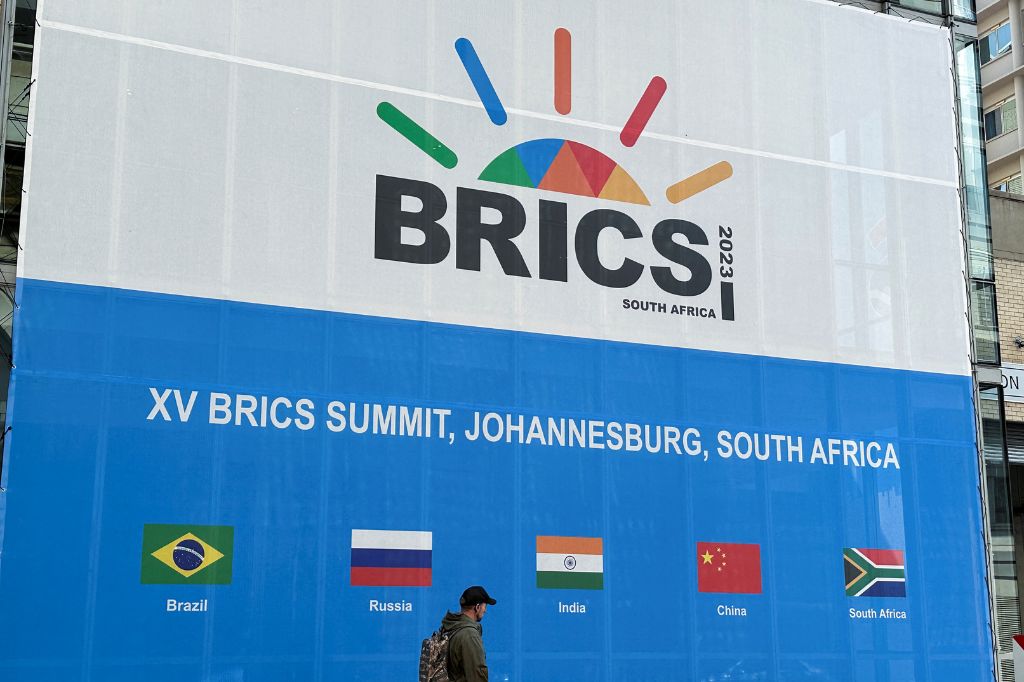Highlights:
- China emphasizes the importance of BRICS expansion amidst geopolitical challenges.
- BRICS nations represent 25% of the global economy, showcasing significant global influence.
- US sees no immediate threat from the expanding BRICS, while emphasizing strong ties with India, Brazil, and South Africa.
- Disagreements highlighted between the West and BRICS concerning Russia’s involvement in Ukraine.
- Over 40 nations, including several from the Asia-Pacific, have shown interest in joining the BRICS.
As the leaders of the BRICS nations convene for their annual summit, China is at the forefront, underscoring the potential and influence of this powerful alliance.
Comprising Brazil, Russia, India, China, and South Africa, the BRICS economies account for a significant 25% of the world’s total. Their current summit, held in South Africa, has caught global attention, especially with the amplified interest in nations wanting to join this influential bloc.
China’s President, Xi Jinping, conveyed through his Commerce Minister, Wang Wentao, a clear message: Expansion and inclusiveness, not confrontation, define the essence of BRICS. Xi emphasized that “hegemonism isn’t a part of China’s DNA,” positioning the summit as a conduit for peace, progress, and equitable international order. His words resonate with the underlying theme of the BRICS, striving to enhance their strategic partnership and championing an inclusive economic environment.
It’s clear: Beijing envisions an enlarged BRICS. With China being the dominant economy in this group, President Xi’s visit to South Africa is significant. It portrays China’s determination to drive BRICS’ outreach and expansion.
However, the global political canvas isn’t without its challenges. Jake Sullivan, the White House National Security Advisor, mentioned the US’s standpoint on BRICS, stating that Washington doesn’t view the bloc as a geopolitical contender. The US continues to nurture its relationships with Brazil, India, and South Africa while managing its ties with China and addressing Russia’s assertiveness.
The lingering global issues, such as the conflict in Ukraine, cast a shadow over the summit. BRICS members like South Africa, China, and India have refrained from condemning Russia’s actions, diverging from Western nations.
In a twist, Russian President Vladimir Putin, currently facing international scrutiny over the Ukrainian situation, voiced concerns via a pre-recorded message, pinpointing the sanctions’ adverse ripple effects on global trade.
The summit is a melting pot of world leaders. Indian Prime Minister Narendra Modi and Brazil’s President Luiz Inacio Lula da Silva are among the main attendees, accompanied by representatives from roughly 50 nations.
Also read: Avyan Global Bolsters Philippine Unit with Industry Veteran Hermie de Leon
A point of unity among BRICS countries is their collective aspiration for a more equitable global order. With the bloc housing both democracies and autocratic states, it offers a diverse viewpoint. Moreover, they’ve been bullish on promoting their development bank, positioning it as a viable alternative to traditional financial giants like the World Bank.
As the 15th BRICS summit revolves around the “BRICS and Africa” theme, it’s evident that Africa is becoming a crucial diplomatic frontier. Superpowers like the US, Russia, and China are actively pursuing influence in this rapidly emerging continent.
Founded initially as an alliance of four nations in 2009, BRICS soon welcomed South Africa into its fold the subsequent year. Interestingly, over 40 countries, especially from the ‘Global South’ and encompassing Asia-Pacific nations such as Indonesia, have expressed a desire to be part of this growing family.
South African President Ramaphosa encapsulated the sentiment of the summit, highlighting the increasing global stature and influence of the BRICS alliance. Given the events and deliberations, the Asia-Pacific region and the world at large will be watching closely, recognizing the monumental shifts in the global economic and political landscape.

















